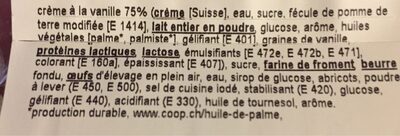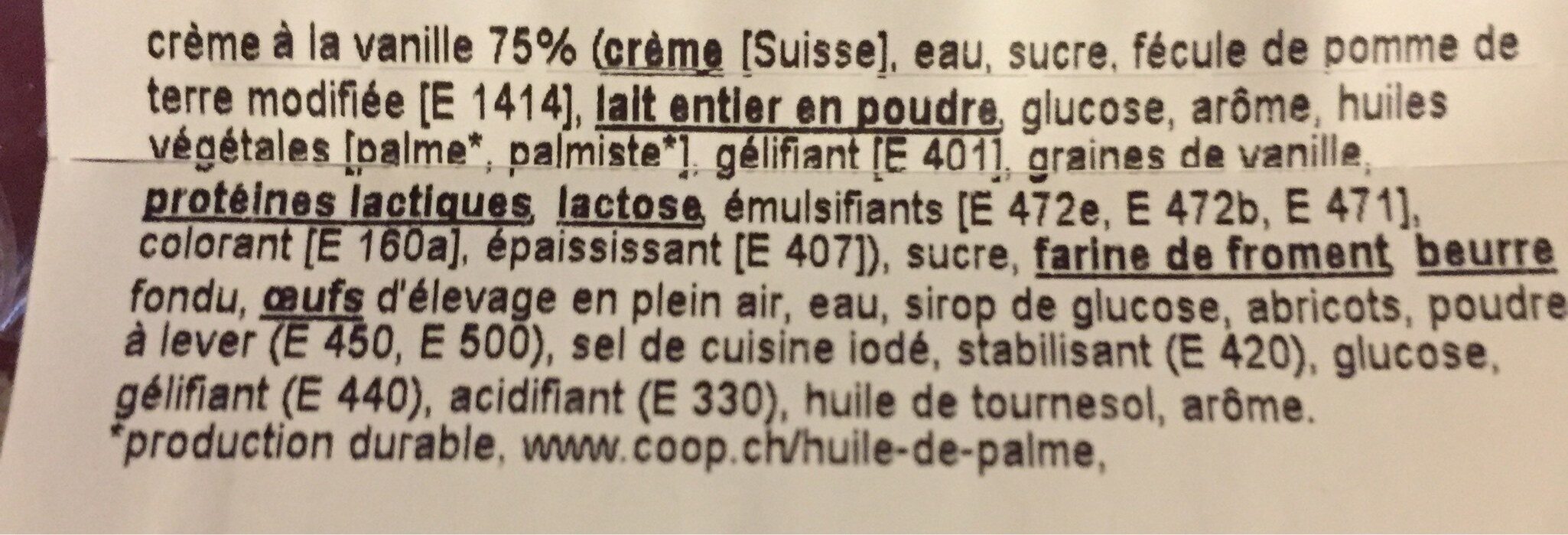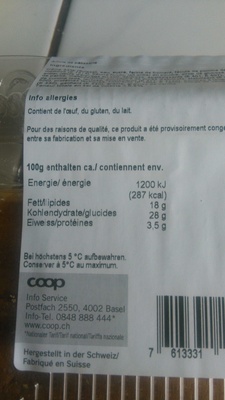Éclair à la vanille (2 pc.) - Coop - 2 pièces, 120g.
This product page is not complete. You can help to complete it by editing it and adding more data from the photos we have, or by taking more photos using the app for Android or iPhone/iPad. Thank you!
×
Barcode: 7613331223425 (EAN / EAN-13)
Common name: Eclair vanille
Quantity: 2 pièces, 120g.
Packaging: fr:1 boîte en plastique contenant 2 éclairs
Brands: Coop
Categories: Snacks, Sweet snacks, Biscuits and cakes, Pastries
Labels, certifications, awards: Made in Swiss
Manufacturing or processing places: Suisse
Link to the product page on the official site of the producer: http://www.coop.ch
Stores: Coop
Countries where sold: Switzerland
Matching with your preferences
Environment
Packaging
Transportation
Threatened species
Report a problem
Data sources
Product added on by openfoodfacts-contributors
Last edit of product page on by packbot.
Product page also edited by alena42, kiliweb, nuss0041, roboto-app, yuka.VDdFZUVhNVJ2dnRRdmNZLzl6RGw1ZE1sN0p1dFhtRzlCdlFJSWc9PQ.










